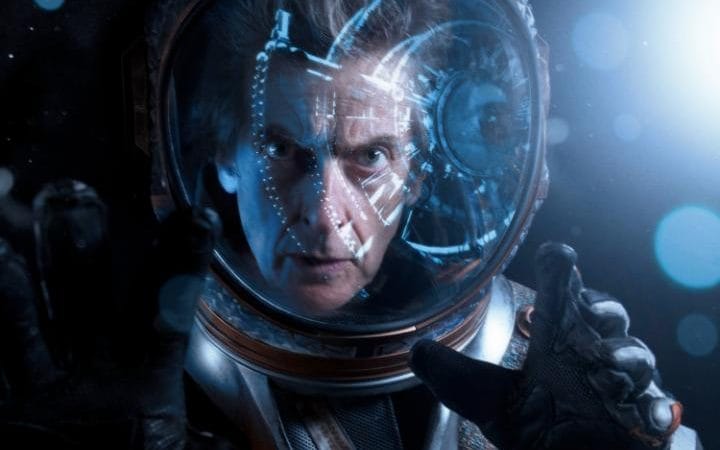
Down to Earth
This series of Doctor Who, we were told, was made up of a series of “blockbuster movie stories”. Last night’s episode, The Power of Three, doesn’t quite fit the bill. Classy special effects apart, it’s hard to see it being adapted for the big screen in a way that you could with previous episodes (“every Dalek, ever!” “Dinosaurs! On a Spaceship!” “A western!”). The Power of Three is a TV episode pure and simple. It’s none the worse for that, and its chief interest is understanding and exploring what’s made the series so successful since its regeneration in 2005.
The idea of the Doctor battling an alien invasion of Earth was never as much a part of Sixties – Eighties Doctor Who as folklore would have you believe. Apart from the period when Jon Pertwee played the Doctor, the programme tended to shy away from the mundane here and now and even when it attempted to portray contemporary Earth it tended towards a heightened reality of oak panelled rooms, Mummerset villages or industrial plants.
One of the distinctive touches which Russell T Davies brought to the programme was to bring the Doctor to Earth in settings that we could all identify and empathise with – council estates, comprehensive schools, department stores and call centres became the new norm (classic Who tended more towards Queen Anne mansions with interiors converted to high tech labs in contravention of all known planning laws).
Steven Moffat’s taste over the last two years has tended more towards the fairy tale; if not quite as cod-Archers as some of Tom Baker’s outings, the village-based Pond stories and last years Narnia-esque Christmas Special have seen a return to the isolated large house on the outskirts of a rural community. The Power of Three, however, sees the programme return to a more RTD-esque depiction of Earth, revolving around the Ponds’ home life complete with Wii, garden barbecues and clubbing as well as a Holby-esque hospital. And it turns out that this is something we’ve been missing – with the exception of the James Corden episodes – rather badly. Chibnall’s clever use of tropes introduced by RTD – TV news as exposition and imparting a sense of global scale to the story; UNIT based under the Tower of London – helps recreate a sense of Doctor Who that feels timeless but is actually quite modern.
Another of Russell T Davies’ strokes of genius was to introduce a sense of companions having real families and real lives. Classic Who companions tended to have off-screen relatives who were rarely mentioned and no apparent friends. Since 2005, however, Who companions have tended to have funny mums, eccentric grandparents and a circle of friends. Again, Steven Moffat broke with this pattern when he introduced Amy Pond (the absence of her parents being an low-key mystery in her first series). The Power of Three brings back Mark Williams’ wonderful depiction of Rory’s dad and again underlies how much we’ve missed with this. I much prefer this year’s run of stories than last year’s and the reason I think is this: this year sees the Doctor and co as investigators or travellers encountering strange situations rather than being at the centre of strange events.
How much of this will last is anyone’s guess – we know virtually nothing about the Doctor’s next companion and from what little has so far leaked about next year’s storylines we don’t seem to be seeing much of early twenty-first century earth, but while the attempt to break from the template created by Russell T Davies seemed sensible, it’s to be hoped It’s a temporary departure from the norm rather than clean break – Doctor Who needs more stories like The Power of Three.
It’s not flawless – the denouement of the Doctor stopping an Emperor Palpatine lookalike’s evil scheme by the simple expedient of waving his sonic screwdriver at a Perspex screen is one of the weakest ever! – but it’s fun and it’s energetic and it’s charming. It explores the absurdity of ordinary people leading ordinary lives getting caught up in the extraordinary world of the Doctor and his TARDIS and trying to work out what’s normal and what’s extraordinary. It reminds us that the Doctor has a Puck-esque sense of mischief (whisking Amy and Rory off from their wedding anniversary for a romantic night at the Savoy in 1890) he returns them seven weeks and an accidental marriage to Henry VIII later.
Arthur Darvill, Karen Gillan and Mark Williams milk the material for all they’re worth, and if they rather overshadow Jemma Redgrave and guest villain Steven Berkoff in the process that’s a telling indicator of where the script’s true interest lies.
Fizzingly directed by Douglas Mackinnon, the story’s heart is a simple two-hander, wonderfully played by Matt Smith and Karen Gillan, set on the banks of the Thames as the Doctor and Amy begin to face up to the fact that they can’t go on like this. That’s probably right – few companions in Doctor Who have lasted as long and the programme thrives on change – but it’s a shame that we’re going to lose Brian almost as soon as we’ve found him. Let’s hope we don’t lose the sensibility of this story too.
One thought on “‘Doctor Who’ Series 7 Episode 4: ‘The Power Of Three’ Review”
Comments are closed.















Great review, Nick! My feelings exactly. I can’t believe we got Rory’s dad so late; and he was so perfect an addition to the cast! And the denoucement was incredibly silly and a bit rushed. But I loved all the rest of it. I think they needed another 15 minutes though.